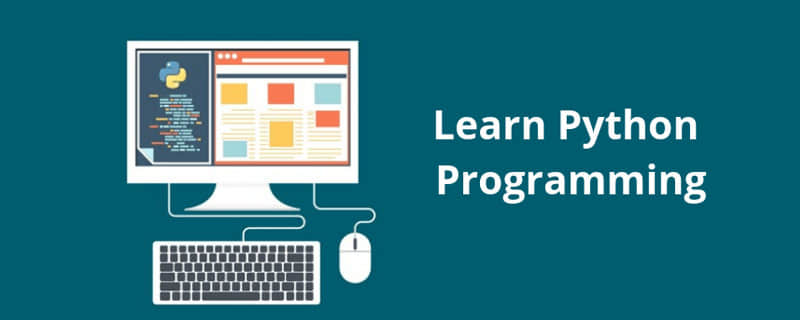本文摘自php中文网,作者coldplay.xixi,侵删。

免费学习推荐:python视频教程
先上效果,视频敬上:
字符舞:
代码舞
源代码:
video_2_code_video.py
|
1 2 3 4 5 6 7 8 9 10 11 12 13 14 15 16 17 18 19 20 21 22 23 24 25 26 27 28 29 30 31 32 33 34 35 36 37 38 39 40 41 42 43 44 45 46 47 48 49 50 51 52 53 54 55 56 57 58 59 60 61 62 63 64 65 66 67 68 69 70 71 72 73 74 75 76 77 78 79 80 81 82 83 84 85 86 87 88 89 90 91 92 93 94 95 96 97 98 99 100 101 102 103 104 105 106 107 108 109 110 111 112 113 114 115 116 117 118 119 120 121 122 123 124 125 126 127 128 129 130 131 132 133 134 135 136 137 138 139 140 141 142 143 144 145 146 147 148 149 150 151 152 153 154 155 156 157 158 |
import argparseimport osimport cv2import subprocessfrom cv2 import VideoWriter_fourccfrom PIL import Image, ImageFont, ImageDraw# 命令行输入参数处理# aparser = argparse.ArgumentParser()# aparser.add_argument('file')# aparser.add_argument('-o','--output')# aparser.add_argument('-f','--fps',type = float,default= 24)#帧# aparser.add_argument('-s','--save',type = bool, nargs='?',default= False,const= True)# 是否保留Cache文件,默认不保存classVideo2CodeVideo: def __init__(self): self.config_dict = { # 原视频文件 "input_file":"video/test.mp4", # 中间文件存放目录 "cache_dir":"cache", # 是否保留过程文件。True--保留,False--不保留 "save_cache_flag": False, # 使用使用的字符集 "ascii_char_list": list("01B%8&WM#*oahkbdpqwmZO0QLCJUYXzcvunxrjft/\|()1{}[]?-_+~<>i!lI;:oa+>!:+. "), }
# 第一步从函数,将像素转换为字符 # 调用栈:video_2_txt_jpg -> txt_2_image -> rgb_2_char def rgb_2_char(self, r, g, b, alpha=256): ifalpha == 0: return'' length = len(self.config_dict["ascii_char_list"]) gray = int(0.2126 * r + 0.7152 * g + 0.0722 * b) unit = (256.0 + 1) / length returnself.config_dict["ascii_char_list"][int(gray / unit)]
# 第一步从函数,将txt转换为图片 # 调用栈:video_2_txt_jpg -> txt_2_image -> rgb_2_char def txt_2_image(self, file_name): im = Image.open(file_name).convert('RGB') # gif拆分后的图像,需要转换,否则报错,由于gif分割后保存的是索引颜色 raw_width = im.width raw_height = im.height width = int(raw_width / 6) height = int(raw_height / 15) im = im.resize((width, height), Image.NEAREST)
txt ="" colors = [] fori in range(height): forj in range(width): pixel = im.getpixel((j, i)) colors.append((pixel[0], pixel[1], pixel[2])) if(len(pixel) == 4): txt += self.rgb_2_char(pixel[0], pixel[1], pixel[2], pixel[3]) else: txt += self.rgb_2_char(pixel[0], pixel[1], pixel[2]) txt +='\n' colors.append((255, 255, 255))
im_txt = Image.new("RGB", (raw_width, raw_height), (255, 255, 255)) dr = ImageDraw.Draw(im_txt) # font = ImageFont.truetype(os.path.join("fonts","汉仪楷体简.ttf"),18) font = ImageFont.load_default().font x = y = 0 # 获取字体的宽高 font_w, font_h = font.getsize(txt[1]) font_h *= 1.37 # 调整后更佳 # ImageDraw为每个ascii码进行上色 fori in range(len(txt)): if(txt[i] =='\n'): x += font_h y = -font_w # self, xy, text, fill = None, font = None, anchor = None, # *args, ** kwargs dr.text((y, x), txt[i], fill=colors[i]) # dr.text((y, x), txt[i], font=font, fill=colors[i]) y += font_w
name = file_name #print(name +' changed') im_txt.save(name)
# 第一步,将原视频转成字符图片 # 调用栈:video_2_txt_jpg -> txt_2_image -> rgb_2_char def video_2_txt_jpg(self, file_name): vc = cv2.VideoCapture(file_name) c = 1 ifvc.isOpened(): r, frame = vc.read() ifnot os.path.exists(self.config_dict["cache_dir"]): os.mkdir(self.config_dict["cache_dir"]) os.chdir(self.config_dict["cache_dir"]) else: r = False whiler: cv2.imwrite(str(c) +'.jpg', frame) self.txt_2_image(str(c) +'.jpg') # 同时转换为ascii图 r, frame = vc.read() c += 1 os.chdir('..') returnvc # 第二步,将字符图片合成新视频 def txt_jpg_2_video(self, outfile_name, fps): fourcc = VideoWriter_fourcc(*"MJPG")
images = os.listdir(self.config_dict["cache_dir"]) im = Image.open(self.config_dict["cache_dir"] +'/'+ images[0]) vw = cv2.VideoWriter(outfile_name +'.avi', fourcc, fps, im.size)
os.chdir(self.config_dict["cache_dir"]) forimage in range(len(images)): # Image.open(str(image)+'.jpg').convert("RGB").save(str(image)+'.jpg') frame = cv2.imread(str(image + 1) +'.jpg') vw.write(frame) #print(str(image + 1) +'.jpg'+' finished') os.chdir('..') vw.release()
# 第三步,从原视频中提取出背景音乐 def video_extract_mp3(self, file_name): outfile_name = file_name.split('.')[0] +'.mp3' subprocess.call('ffmpeg -i '+ file_name +' -f mp3 -y '+ outfile_name, shell=True)
# 第四步,将背景音乐添加到新视频中 def video_add_mp3(self, file_name, mp3_file): outfile_name = file_name.split('.')[0] +'-txt.mp4' subprocess.call('ffmpeg -i '+ file_name +' -i '+ mp3_file +' -strict -2 -f mp4 -y '+ outfile_name, shell=True) |
相关阅读 >>
Python如何发送?Python发送email的三种方式介绍
Python中@property装饰器的技巧性用法(代码示例)
更多相关阅读请进入《Python》频道 >>

Python编程 从入门到实践 第2版
python入门书籍,非常畅销,超高好评,python官方公认好书。




